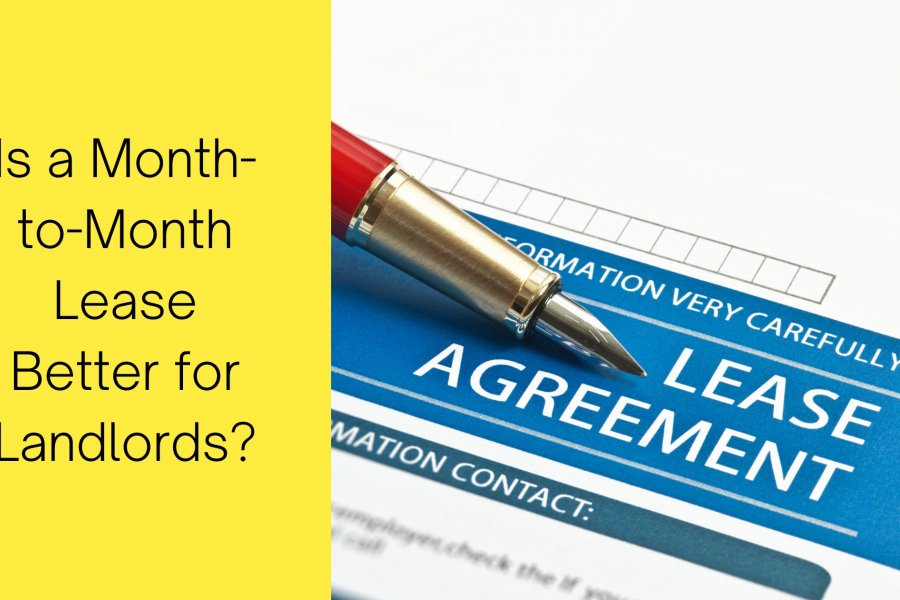
Landlords who prefer renting out a unit over a short-term period can opt for a month-to-month leasing arrangement. While traditional leases focus on long-term tenancy, typically a year or two, to maximize rental earnings, month-to-month leases also offer their advantages.
You may be thinking whether or not a month-to-month lease is suitable for you. This article will outline the benefits and drawbacks that come with month-to-month leasing.
What Is a Month-to-Month Lease?
A month-to-month lease is a contract between a landlord and renter that renews each month until one of the parties gives a 30-day notice. Generally, month-to-month lease arrangements are resorted to by landlords and renters to extend the current lease for an indefinite period. Although, it is also possible to set up a month-to-month lease right at the start.
Why Would You Prefer a Month-to-Month Lease?
Landlords who prioritize flexibility may opt for a month-to-month lease for various reasons. As mentioned earlier, a month-to-month lease can also be a viable way of providing your tenants with extended time if they are planning on moving a few months after their initial lease ends.
Although month-to-month leases cater to the short-term needs of the landlord and tenant, it can also mean losing out on regular income. You must also be prepared for vacant periods until you find the right renter.

The Benefits That Come With Month-to-Month Leases
New landlords may still be working out the right rental fees and management terms, so a month-to-month agreement is a great way to test policies and lease terms. The short-term commitment allows you to easily adjust your prices and property rules.
If you are waiting for a property buyer to wrap up the sale, then a month-to-month lease can also help you earn income while arrangements for the real estate purchase are finalized. Aside from the flexibility advantage, you also gain the following upsides:
The End Date is Flexible
You won’t have to wait until a tenancy ends in a year or two since a month-to-month rental agreement only requires you to notify the renter that you want to end the lease. This means that you can exercise greater control over the lease’s end-date. If you need to use the property, you can occupy it more quickly.
You may also be testing out the rental rates and leasing conditions until you get more comfortable, which is easier with a month-to-month lease. Rather than waiting for a yearly lease to end to make changes, you can update terms after a month with the right notices.

The Rental Price Can Be Raised
With the short-term horizon offered by month-to-month leases, you have the option of quickly adjusting to the current market demand and increasing your rental rate. Unlike traditional leases, where the rates are fixed, you can optimize your earnings given the market conditions.
Breaking the Lease Won’t Result in Paying a Penalty
With the simple requirement of providing the renter with due notice, you won’t need to worry about facing penalties for breaking a lease early. The nature of a month-to-month lease is temporary residence so both parties know that the arrangement can change any time and the lease can end.
If you have a vacation rental, you can also take advantage of the peak season by increasing rates or welcoming more renters than usual. This can be done without a dispute with the current tenants. You can inform them of the end of the lease, so you can put in place new changes in line with the high market season.
You Can Keep the Top-quality Tenants
Short-term contracts allow you better select your tenants. With good renters, you can keep extending a month-to-month lease until they decide to move out.
The Drawbacks That Come With a Month-to-Month Lease
While month-to-month leases offer plenty of benefits, there are also downsides to this arrangement. Some drawbacks include:

Uncertain End Dates
Since month-to-month leases are temporary, a lot of uncertainty can exist. Tenants often stay for a short time and even if you happen to find wonderful renters who take care of the property, pay on time, and comply with the policies, you will likely need to find new residents more quickly then you would with a long-term agreement.
Short Notice Periods Can Make it Hard to Land New Tenants
Thirty days may not be enough time to find new residents for your rental unit. There is no guarantee that you will attract good renters within that time frame. It can cause a lot of pressure for the landlords when no new renter has signed up as the 30-day mark approaches.
Rental Income Can Be Irregular
Compared to a long-term lease, month-to-month leases can deliver unstable earnings. There may be months, where the unit is vacant. Despite vacancies and a lack of rental income, property maintenance costs, mortgage payments, and other fees will continue to be generated.
How A Month-to-Month Lease Differ From A Lease Renewal
What separates lease renewals from month-to-month leases is that the former is the process of signing a new lease that typically covers a rental term of 6 months to a year. You need to send a lease renewal offer to your renters 90 days before the expiry of the tenancy. Meanwhile, month-to-month leases can function as an extension of the tenancy.
Bottom Line
Knowing the pros and cons of a month-to-month lease aids you in determining your rental preferences. Alternatively, you can hire a reputable property manager to help you. Contact Mark Thomas Properties PM today to learn about our services!
